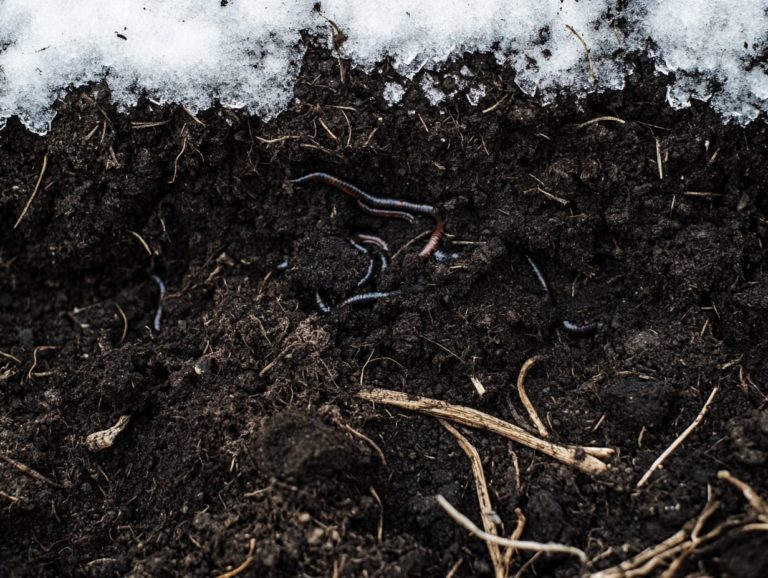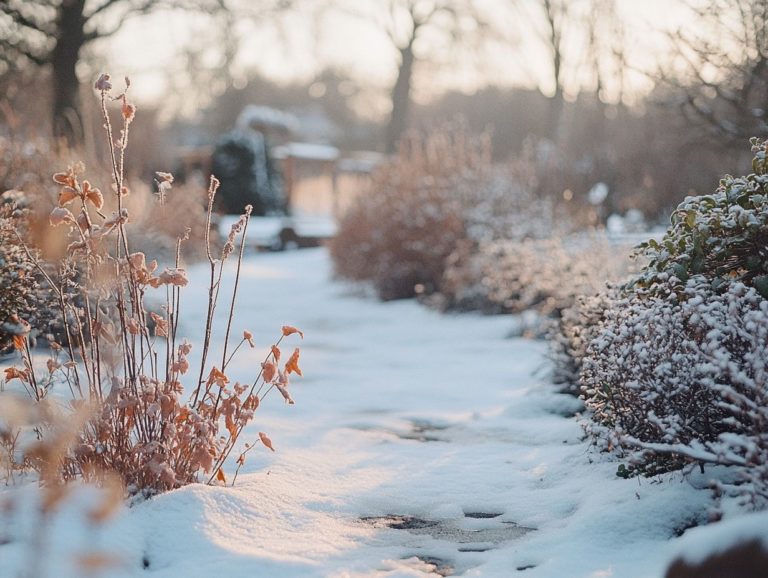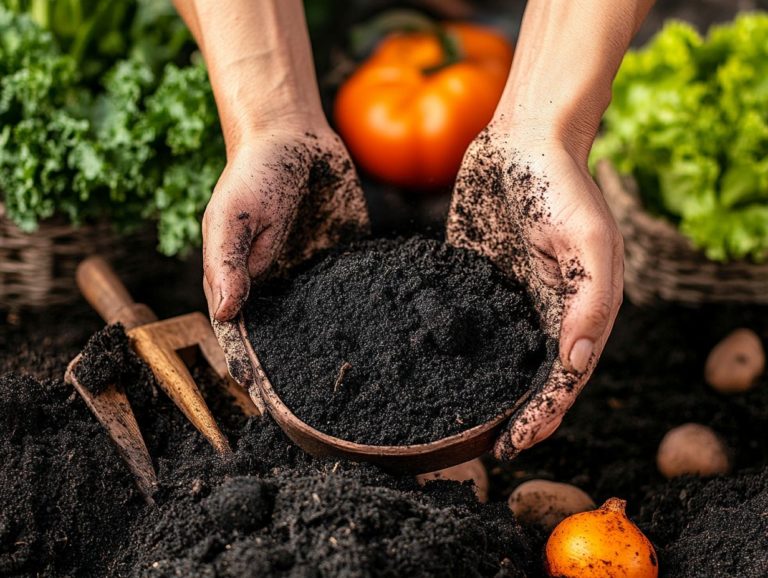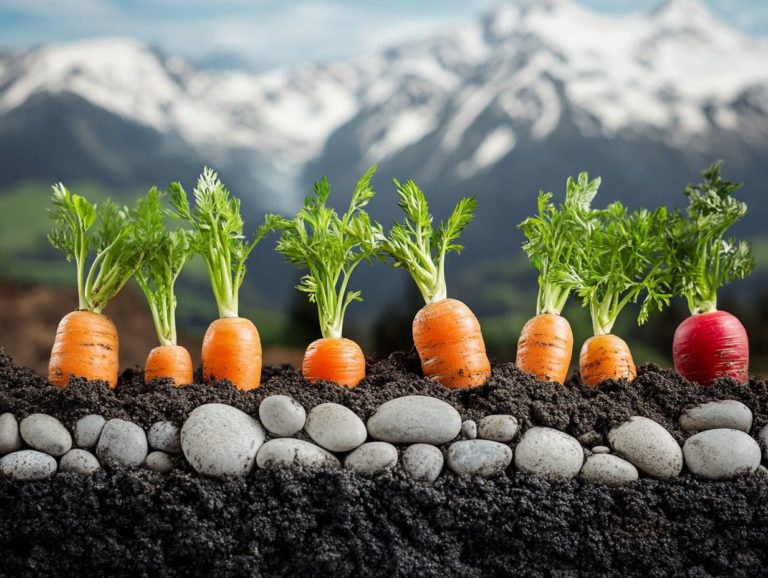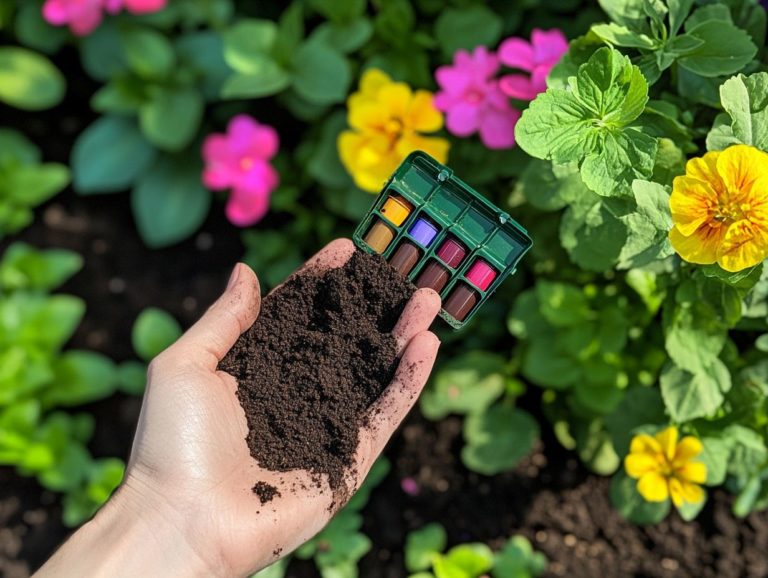Understanding Soil Drainage Needs in Cold Climates
Soil drainage is absolutely vital for maintaining healthy plants, particularly in colder climates where excess moisture can cause significant challenges.
Understanding the importance of proper drainage is key to ensuring your plants thrive. Several factors influence soil drainage in chilly weather, so it’s important to be vigilant for signs of poor drainage that may emerge.
Practical techniques can enhance drainage! Proactive tips to prevent future drainage issues can greatly contribute to the success of your garden, even in frosty conditions.
Contents
- Key Takeaways:
- The Importance of Soil Drainage
- Factors Affecting Soil Drainage in Cold Climates
- Signs of Poor Soil Drainage
- Improving Soil Drainage in Cold Climates
- Preventing Drainage Problems
- Frequently Asked Questions
- What is soil drainage and why is it important in cold climates?
- How can I determine the drainage needs of my soil in a cold climate?
- What are some ways to improve soil drainage in cold climates?
- How often should I water my plants in cold climates?
- What are some signs of poor soil drainage in cold climates?
- Can soil drainage needs change in different areas of a cold climate?
Key Takeaways:

- Proper soil drainage is crucial for the health of plants, especially in cold climates where excess moisture can be damaging. Understanding soil moisture levels can also help in effective vegetation management.
- Cold climates can significantly impact soil drainage; factors like climate and soil composition affect how quickly water drains.
- Signs of poor soil drainage, such as waterlogged conditions and stunted plant growth, should be addressed promptly to prevent further issues. Effective drainage techniques and proper maintenance can improve soil health in cold climates.
The Importance of Soil Drainage
Soil drainage is essential for maintaining plant health, especially in colder climates where excess moisture can create challenging conditions for growth. Understanding soil fertility in cold climates can greatly enhance your gardening efforts.
By ensuring proper drainage, you facilitate optimal water movement within the soil. This prevents waterlogged situations that can suffocate roots and hinder nutrient absorption.
When gardening, it’s vital for you to understand your soil’s characteristics. This knowledge enables you to implement effective drainage solutions, enhancing soil fertility and promoting overall plant vitality.
Why Proper Drainage is Essential for Plant Health
Proper drainage is crucial for your plants’ health! It prevents water from accumulating in the soil, which can lead to drainage issues that ultimately harm the root systems of your plants.
When excess moisture lingers around the roots, it creates a perfect breeding ground for root diseases like root rot (a condition that damages roots and can kill plants). Poor drainage can also hinder your plants’ ability to retain essential nutrients, negatively impacting soil fertility and stunting their growth.
Healthy roots thrive on the right moisture balance! Too much water can suffocate them and invite fungal growth (mushrooms or molds that can spread throughout your garden).
By implementing effective drainage practices like adding materials to improve soil quality, such as compost or well-rotted manure you can foster stronger, more resilient plants that thrive within a healthy ecosystem.
Factors Affecting Soil Drainage in Cold Climates
In cold climates, numerous factors influence soil drainage, such as soil composition (the mix of different types of soil), environmental conditions, and the distinct challenges presented by freezing cycles and rainfall runoff. For more insights, consider understanding soil fertility levels in cold climates.
Understanding these factors is key to improving your gardening skills! This knowledge allows you to effectively address drainage issues and enhance the overall health of your plants.
Climate and Soil Composition
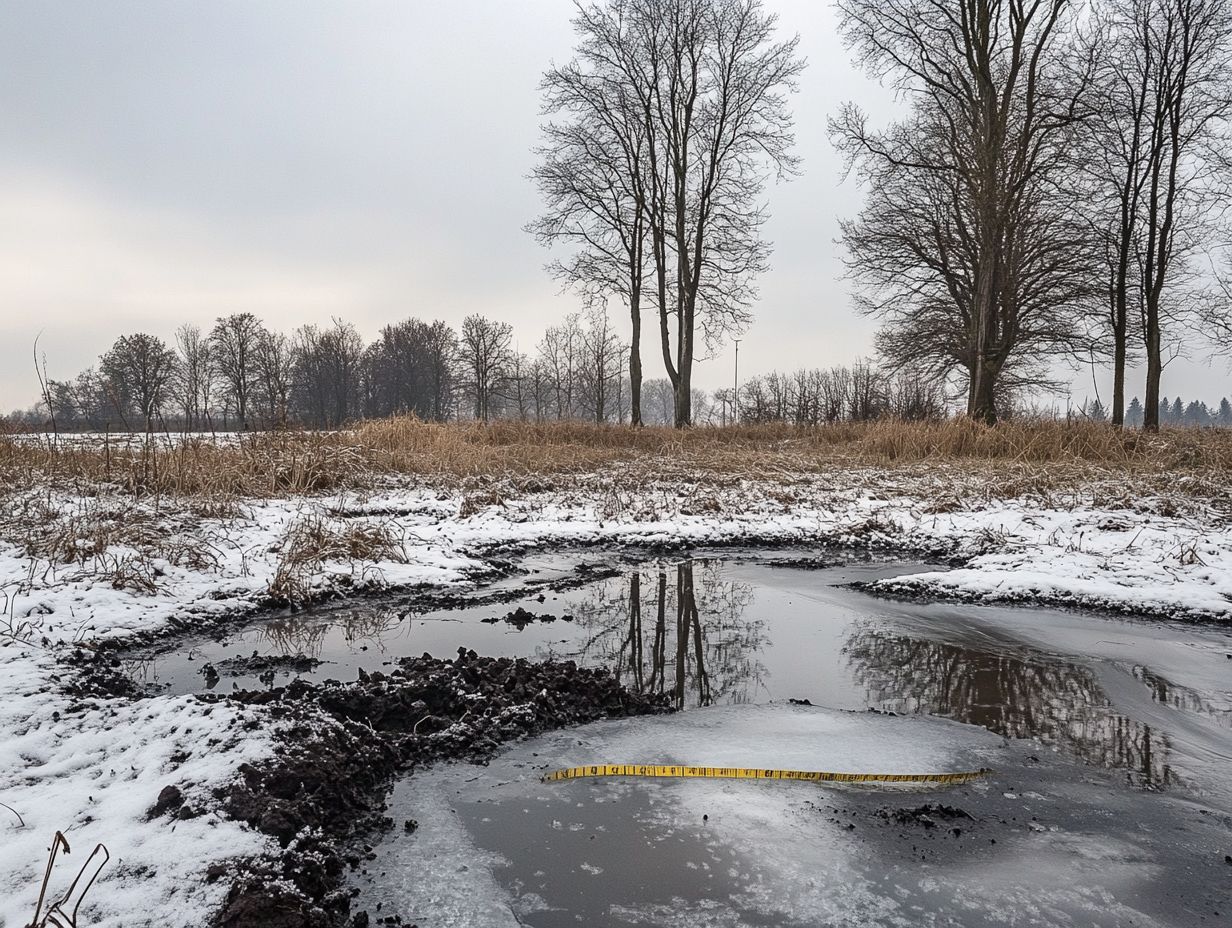
Soil composition plays a pivotal role in drainage within cold climates. Understanding soil pH in cold climates is crucial, as the texture and structure of the soil dictate its capacity to handle excess moisture and related drainage challenges.
This relationship becomes clear when you compare sandy soils, which allow water to flow through swiftly due to their coarse particles, with clay soils, where fine particles can trap water, leading to pooling and saturation.
Understanding these distinctions is essential for effective land management.
To enhance drainage capabilities in these demanding climates, consider strategies like incorporating organic amendments (materials such as compost or well-rotted manure) to significantly improve soil structure. Additionally, planting cover crops can help maintain soil integrity, reduce compaction, and promote better water infiltration, ultimately creating a healthier environment for growth.
Start enhancing your garden’s drainage today for a thriving plant ecosystem!
Signs of Poor Soil Drainage
Recognizing the signs of poor soil drainage is crucial for preserving the health of your plants. Waterlogged conditions can compromise root growth and heighten their vulnerability to root diseases.
By observing these symptoms early, you have the chance to take prompt action and effectively address any drainage issues. This can lead to improved root growth.
Identifying and Addressing Drainage Issues
Identifying drainage issues starts with assessing soil health through soil testing. This process gives you essential information about moisture levels, compaction, and nutrient availability.
By analyzing your soil quality, you can pinpoint areas prone to waterlogging or erosion. Look for signs like standing water or unusually lush patches; these are strong indicators of drainage problems.
After the assessment, enhancing soil drainage is essential. One effective method is incorporating organic matter and compost. These natural materials improve soil structure and enhance its capacity to retain beneficial moisture while allowing excess water to flow freely.
Regular maintenance and ongoing soil testing will lead to a healthier landscape and improve nutrient supplementation.
Improving Soil Drainage in Cold Climates
Improving soil drainage in cold climates requires targeted techniques and soil amendments to alleviate excess moisture and foster robust root growth. For more insights, refer to understanding soil needs for cold-climate plants. Addressing drainage issues can significantly enhance soil health and elevate the vitality of your plants.
Effective Drainage Techniques

Effective drainage techniques, such as using raised beds and applying compost, are essential for enhancing soil drainage and promoting healthy plant growth.
These methods manage excess water and elevate your soil’s overall health. Raised beds allow you to elevate the planting area, improving water runoff and reducing the risk of root rot.
Applying compost enhances soil structure by increasing its organic matter content, which improves water retention and aeration.
Integrating materials like gypsum can help break up compacted layers for better drainage. You can also incorporate cover crops during the off-season to prevent soil erosion and enhance nutrient cycling, creating a robust environment for your garden.
Preventing Drainage Problems
Preventing drainage issues is a preventive approach that requires you to employ effective gardening techniques aimed at maintaining optimal soil health and moisture retention, especially in challenging climates.
By taking this approach, you set the foundation for a thriving garden, ensuring that your plants receive the care they need to flourish.
Tips for Maintaining Good Soil Drainage
Maintaining good soil drainage requires a thoughtful approach that includes practices like incorporating organic matter and regularly monitoring moisture levels.
To achieve effective results, consider adding amendments such as compost or well-rotted manure. These improvements can significantly enhance both the structure of your soil and the availability of essential nutrients.
Using cover crops during the off-season promotes root systems that aerate the soil, reduce compaction, and improve water infiltration.
When it comes to watering, employing proper techniques like deep watering less frequently encourages roots to grow deeper while minimizing surface runoff.
By focusing on these strategies, you can foster overall soil health and create a thriving environment for your plants to flourish.
Frequently Asked Questions
What are the signs of poor soil drainage?
Look for standing water, lush patches, and root rot as key indicators.
How can I improve soil drainage?
Incorporate organic matter, use raised beds, and apply compost for better drainage.
What are soil amendments?
Soil amendments are materials added to soil to improve its quality, such as compost and gypsum.
Why is soil testing important?
Soil testing reveals vital information about moisture levels and nutrient availability to guide your gardening efforts.
How often should I test my soil?
It’s recommended to test your soil at least once a year or before planting new crops.
What is soil drainage and why is it important in cold climates?
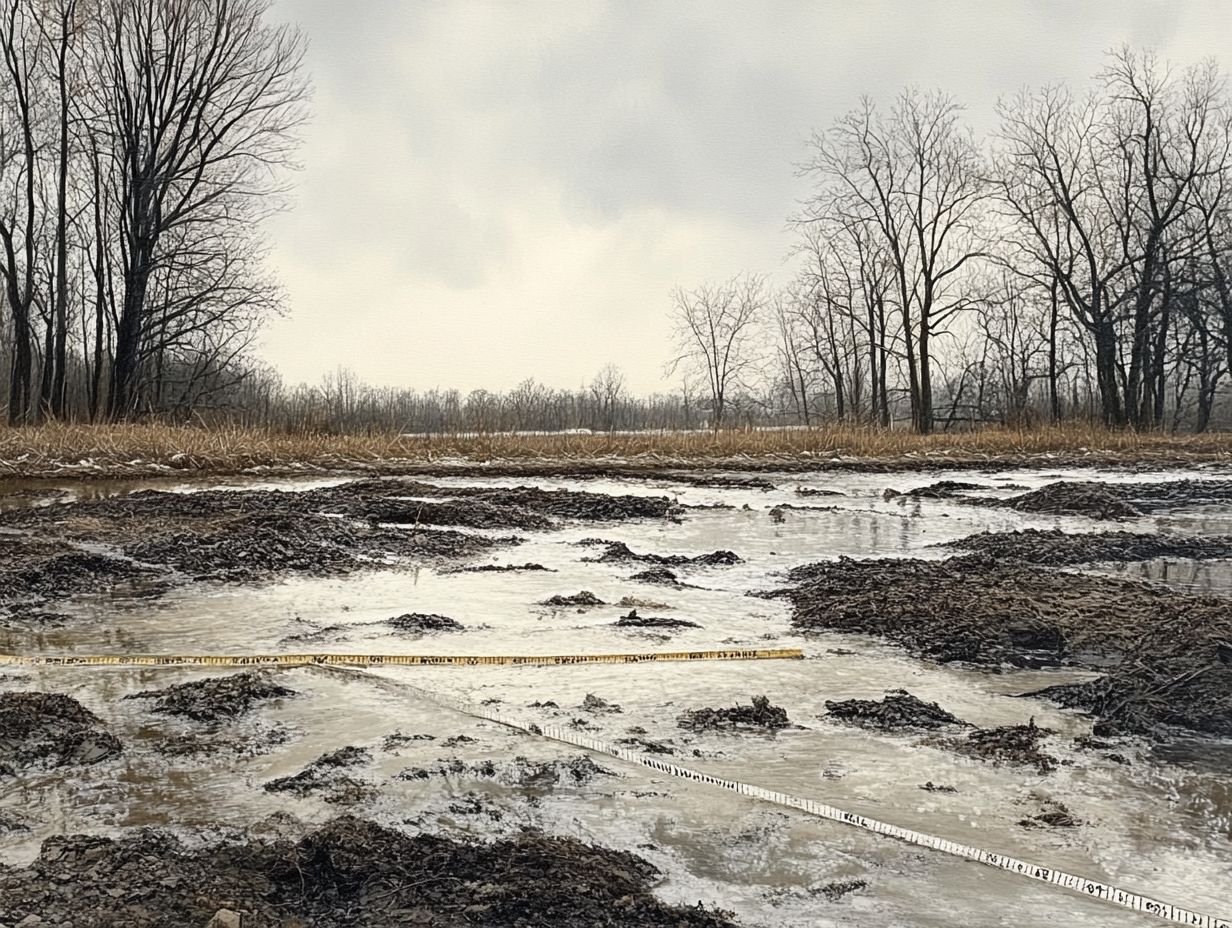
Soil drainage refers to how well water can flow through the soil. In cold climates, good drainage is crucial because excess water can freeze and expand, damaging plant roots and structures.
How can I determine the drainage needs of my soil in a cold climate?
To check your soil’s drainage, dig a hole about 1 foot deep and fill it with water. If it drains within 24 hours, you have good drainage; if not, your soil may require some improvements.
What are some ways to improve soil drainage in cold climates?
Adding organic matter like compost or peat moss can greatly enhance drainage by loosening compacted soil. Installing drainage tiles or a drainage system can also help redirect excess water.
How often should I water my plants in cold climates?
In cold conditions, watering your plants less often is key to their health. Water deeply to ensure moisture reaches the roots while preventing freezing damage.
What are some signs of poor soil drainage in cold climates?
Look out for standing water, slow-draining soil, or moss on the surface. Stressed plants, wilting, or yellow leaves may also indicate poor drainage.
Can soil drainage needs change in different areas of a cold climate?
Yes, drainage needs can differ based on location. High water tables or clay soil usually mean poorer drainage compared to sandy or loamy areas. Assess your specific location to make necessary adjustments.
Check your soil drainage today to keep your plants thriving this winter!


